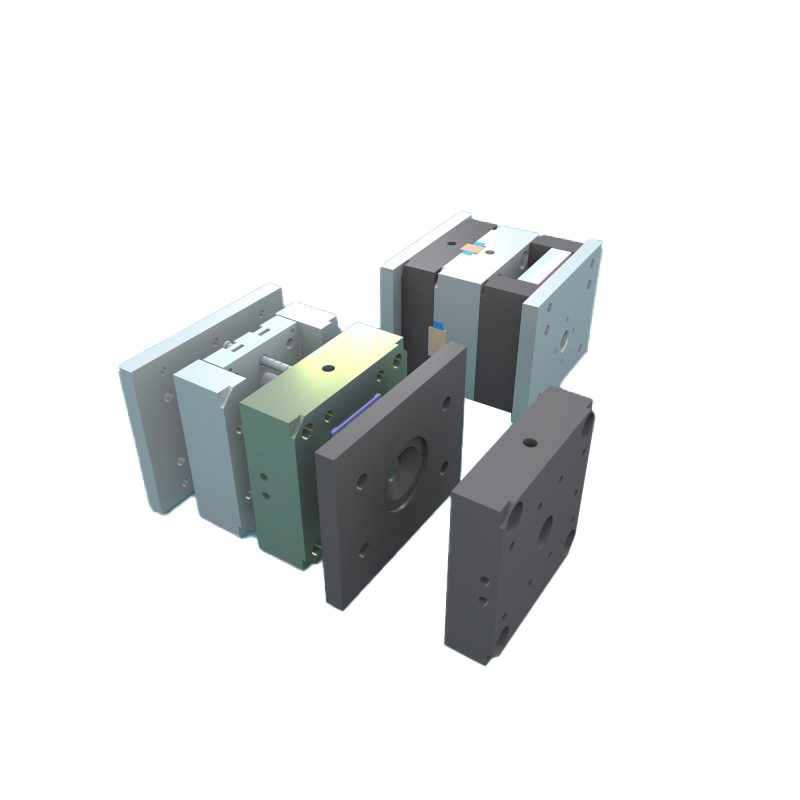Better Touch Better Business
Contact Sales at MDM Metal
A combined plastic mold used for compression molding, extrusion molding, injection molding, blow molding, and low foaming molding,
mainly comprising a concave mold with a variable cavity composed of a concave mold composite substrate, a concave mold component, and a concave mold composite card board, and a convex mold with a variable core composed of a convex mold composite substrate, a convex mold component, a convex mold composite card board, a cavity cutting component, and a side cutting composite board.
Coordinate changes in mold convex, concave, and auxiliary forming systems. Can process series of plastic parts of different shapes and sizes. The plastic processing industry is equipped with plastic molding machines to endow plastic products with complete configurations and precise dimensions of tools.
Due to the wide variety of plastic varieties and processing methods, as well as the complex and simple structures of plastic molding machines and plastic products, the types and structures of plastic molds are also diverse.
With the rapid development of the plastic industry and the continuous improvement of strength in general and engineering plastics, the application range of plastic products is also expanding, and the usage of plastic products is also increasing.
A plastic mold is a tool for producing plastic products. It consists of several sets of parts, which have a molding cavity inside. During injection molding, the mold is clamped onto the injection molding machine, and the molten plastic is injected into the mold cavity, cooled and shaped inside the cavity. Then, the upper and lower molds are separated, and the product is ejected from the mold cavity through the ejection system. Finally, the mold is closed for the next injection molding, and the entire injection process is cyclic.
Generally, plastic molds are composed of two parts: a moving mold and a fixed mold. The moving mold is installed on the moving template of the injection molding machine, and the fixed mold is installed on the fixed template of the injection molding machine. During injection molding, the movable and fixed molds are closed to form a pouring system and cavity. During mold opening, the movable and fixed molds are separated to facilitate the removal of plastic products.
Although the structure of the mold may vary greatly due to differences in plastic varieties and properties, the shape and structure of plastic products, and the type of injection machine, the basic structure is consistent. The mold mainly consists of a pouring system, a temperature regulating system, formed parts, and structural parts. The pouring system and molding parts are the parts that come into direct contact with plastic and change with plastic and products. They are the most complex and variable parts in plastic molds, requiring the highest processing smoothness and accuracy.
The pouring system refers to the part of the flow channel before the plastic enters the mold cavity from the nozzle, including the main flow channel, cold material cavity, diversion channel, and gate. Formed parts refer to various parts that form the shape of a product, including moving molds, fixed molds, cavities, cores, forming rods, and exhaust ports.
Driven by high-tech and the demand for pillar industry applications, plastic molds in China have formed a huge industrial chain.
From the upstream raw and auxiliary material industry and processing, testing equipment to several major downstream application industries such as machinery, automobiles, motorcycles, home appliances, electronic communication, and building materials, the development of plastic molds is full of vitality.
With the rapid development of automobiles, home appliances, electronic communication, and various building materials in China.
Copyright © 2015-2023 MDM Metal All Rights Reserved
 Send A Message
Send A MessageIf you are interested in our products and want to know more details,please leave a message here,we will reply you as soon as we can.